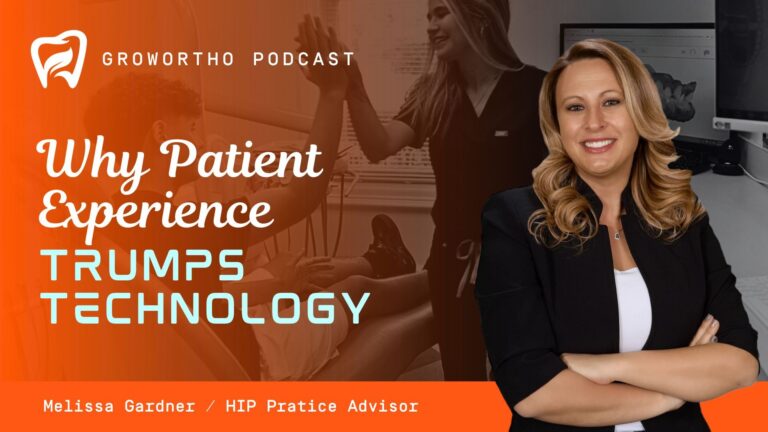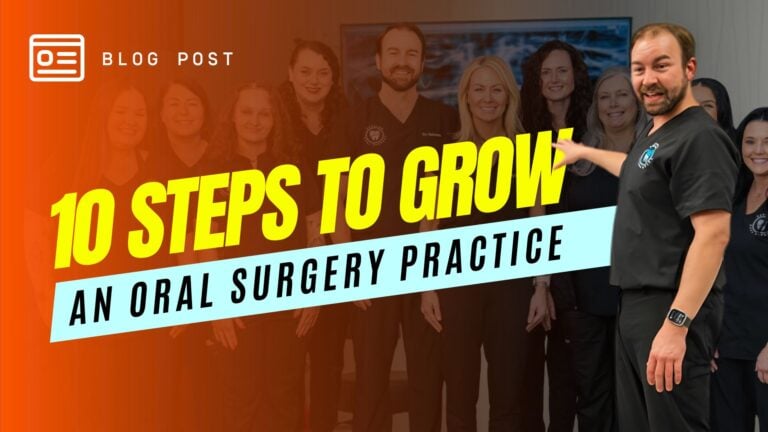Subscribe: RSS
The GrowOrtho Podcast is dedicated to helping orthodontic professionals grow their practices, improve their systems, and navigate industry challenges. In this episode, we explore where the orthodontic industry has been in 2024 and how practices can set actionable, measurable goals for 2025 using the proven 12-Week Year model.
Reflecting On 2024: Lessons And Industry Trends
2024 presented unique challenges for orthodontic practices. Many experienced a dip in growth due to economic uncertainty, changing consumer behaviors, and a natural market correction following the surge of activity during the pandemic years. Practices observed several key trends:
1. Economic Uncertainty And Value-Driven Spending
Patients became more cautious about starting orthodontic treatment, often seeking more cost-effective options. This value-conscious behavior sometimes led patients to delay treatment or prioritize less expensive alternatives.
2. Decreased New Patient Opportunities
A decline in new patient exams highlighted the need for practices to refine their marketing strategies and strengthen their engagement with potential patients.
3. Aligner Market Challenges
The aligner segment saw a drop due to its higher price points and patients perceiving them as less essential compared to traditional braces. Additionally, practices faced competition from general dentists offering aligner treatments and dealt with variable patient compliance.
4. Shifts In Consumer Priorities
Practices noted that patients were increasingly focused on long-term value and self-care, aligning with broader wellness trends.
These insights from 2024 provide a foundation for setting realistic, impactful goals for the year ahead.
Setting Clear And Attainable Goals For 2025
To rebound and thrive in 2025, orthodontic practices must adopt a structured approach to goal setting. The 12-Week Year model, by Brian Moran and Michael Lennington, offers a powerful framework for breaking annual goals into actionable, manageable chunks.
1. Start With Specific And Measurable Goals
Focus on one to three high-impact objectives for each 12-week period. These goals should be tied to measurable outcomes, such as increasing case acceptance rates by a specific percentage or improving conversion rates for new patient consultations.
Example: Instead of a vague goal like “improve patient starts,” aim for “increase patient starts by 15% within the next 12 weeks by enhancing consultation processes.”
2. Break Goals Into Weekly And Daily Tasks
Success hinges on translating big goals into actionable steps. For instance:
• Daily: Conduct post-exam follow-ups with potential patients.
• Weekly: Host training sessions with treatment coordinators (TCs) to refine communication skills.
Focusing on high-value activities, such as improving consultation scripts or refining follow-up protocols, ensures team members stay aligned and productive.
3. Measure Progress Consistently
Implement scorecards to track progress weekly. Strive for an 85% execution rate of planned tasks. Use missed targets as learning opportunities rather than setbacks, adjusting strategies as needed.
Pro Tip: Celebrate team successes, such as hitting weekly or monthly milestones, to maintain motivation and accountability.
4. Foster A Culture Of Accountability
Accountability isn’t about assigning blame but ensuring that every team member feels ownership of their contributions. Weekly check-ins provide a platform to evaluate progress, share feedback, and identify areas for improvement. For example:
• Highlight team members excelling in patient interactions.
• Provide additional training or support where needed.
Engaging Team Members In Practice Growth
The success of your 12-Week Year goals relies heavily on your team’s involvement. To maximize results:
1. Invest In Training and Development
Equip team members with the tools and confidence to excel in their roles. Offer workshops, provide access to resources like treatment coordinator courses, and encourage continual learning.
2. Improve The Patient Experience
Engage team members in refining every step of the patient journey, from the initial phone call to the final follow-up. For example, create scripts for front desk staff to ensure consistent and professional communication.
3. Emphasize Relationship-Building
Patients respond to genuine care and connection. Empower team members to build meaningful relationships with patients, especially adult patients, who often need more reassurance and persistence to commit to treatment.
4. Reward Success
Implement performance-based incentives, such as bonuses tied to case acceptance rates or patient referrals. Recognize achievements regularly to foster a motivated and cohesive team.
Why 2025 Holds Promise For Orthodontic Practices
With the economic uncertainty of 2024 behind us, 2025 presents an opportunity to reset and grow. Several positive trends include:
• Increased Focus On Preventative And Wellness Services
Tap into patients’ growing interest in self-care by emphasizing the long-term benefits of orthodontic treatment.
• Rising Contract Prices
Practices can strategically increase fees while adding value, such as offering whitening services or lifetime retainer programs.
• Growth In Adult Orthodontics
More adults are seeking orthodontic care, providing an opportunity to develop tailored marketing and follow-up strategies.
By focusing on these areas and leveraging the 12-Week Year framework, practices can position themselves for a successful year.
Plan for Success With The GrowOrtho Podcast
Transforming your practice’s challenges into growth opportunities starts with a clear plan and consistent execution. For more actionable insights and strategies, listen to the full GrowOrtho Podcast episode. Learn how to set meaningful goals, engage your team, and make 2025 your best year yet.




